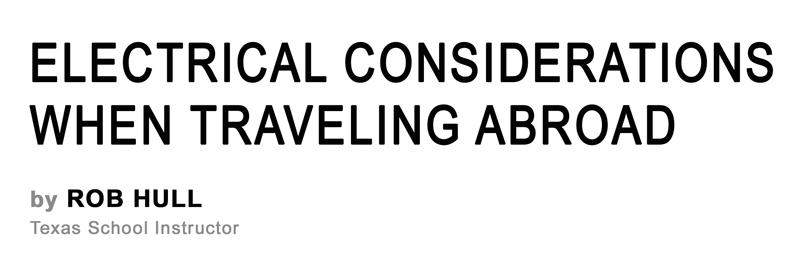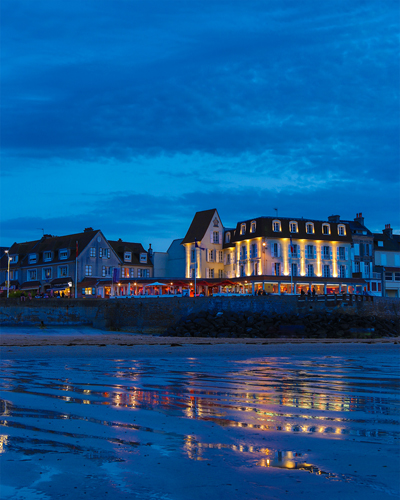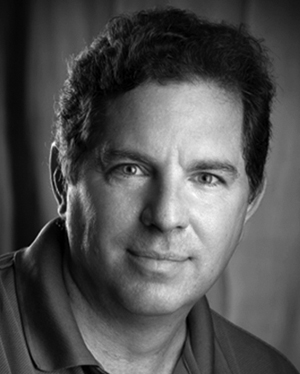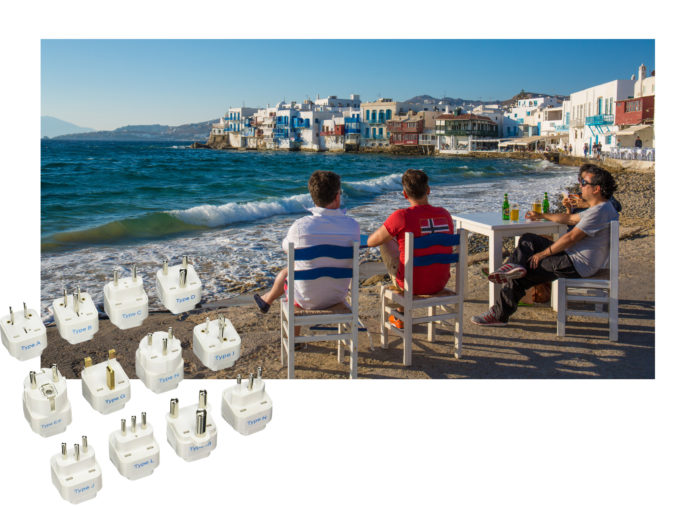 As you plan for your international trip, you need to consider the electrical service which may be quite different than that used in the United States. Unlike North America, most of the world’s electrical service is 220-240 volts at 50Hz. In the US, electricity is usually delivered at 120 volts and 60Hz. Also, you’ll find that the outlets may look quite different from what you see in your own home. So, when you look at electrical considerations for your trip, you need to think about both voltage and plug configuration.
As you plan for your international trip, you need to consider the electrical service which may be quite different than that used in the United States. Unlike North America, most of the world’s electrical service is 220-240 volts at 50Hz. In the US, electricity is usually delivered at 120 volts and 60Hz. Also, you’ll find that the outlets may look quite different from what you see in your own home. So, when you look at electrical considerations for your trip, you need to think about both voltage and plug configuration.
China delivers power at 220 Volts 50Hz but a common Chinese multiple socket can handle the same plug as the United States which can really present a hazard if you try to plug in a 110 Volt device.
Voltage/Frequency – The electricity that is delivered into your home – or hotel room, for that matter – is called Mains Electricity. The two basic elements of this electrical power are the voltage and the frequency. Most of the world’s main electricity is 230 Volts at a frequency of 50 Hz (Hertz). Of course, in the United States, we must be different. Our power is usually 120 Volts at 60 Hz.
Power adapters are quite small and simply allow you to plug a device with a US plug into a receptacle in another country. Power adapters DO NOT convert the power or frequency, so your device must be rated to work with that country’s power. The problem is that I can’t take a device that is designed to work at 120 Volts / 60 Hz and plug it into a socket delivering 230 Volts / 50 HZ. Believe me, bad things will happen. To use a 120 Volt device in a 230 Volt world, I would need to have a power converter that will alter the power before it gets to the device. The other consideration is the plug configuration. International standards define the general requirements for a plug but do not specify any plug or socket configuration – that’s up to each country. As you travel the world, you’ll find plugs and sockets in a wide variety of styles.
So, what do you need? Before we continue, you should consider what you are taking and to what country. Devices that use electricity are divided into two groups: electrical and electronic devices.
Electrical Devices – These are devices that have heating elements or mechanical motors. The most common are:
• Hair Dryer
• Electric Shaver or Toothbrush
• Irons
• Coffee Maker or Water Heater
 For these products, check if they are single or dual voltage. You can find some that will have a voltage switch on them. But, they should also be able to handle 50 Hz or 60 Hz. You can find hair dryers that are dual voltage but only work at 60 Hz.
For these products, check if they are single or dual voltage. You can find some that will have a voltage switch on them. But, they should also be able to handle 50 Hz or 60 Hz. You can find hair dryers that are dual voltage but only work at 60 Hz.
This is a common Chinese Multi Socket plug and receptacle found in China.
My recommendation is to leave all electrical devices at home. You’ll usually find a hair dryer in every hotel room or cabin on a ship. If you really want to bring an electrical device, you’ll need to figure out the voltage requirements. If it is a dual voltage device, then all you need is a plug adapter. If not – like most hair dryers, curling irons, etc. – then you would need a voltage converter in addition to the adapter plug. Just know, I’ve seen hair dryers that were plugged into pretty decent voltage converters and still burned up.
 Electronic Devices – These items use circuit boards and chips. The most common are:
Electronic Devices – These items use circuit boards and chips. The most common are:
• A laptop computer, tablet, e-reader, etc.
• Smartphone or MP3 player
• Camera
• Battery chargers
For all your electronic devices, you’ll find that most of them will work at any voltage and all you need is an adapter plug. Adapters are inexpensive and are often sold in kits. You don’t need a kit with a transformer and every adapter for international travel. These tend to be an expensive waste of money.
For most of Europe, you’ll use a Euro style adapter that is simply two round prongs. If you’re going to the UK or Northern Ireland, you’ll want to have a Great Britain style three-prong adapter. In Greece, when you’re not just chillin’ by the sea with a Mythos beer, you’ll find the two-pronged European style plugs in use.
 Rob Hull, M.Photog.Cr., CPP, started Great Photography over 20 years ago in Coppell, Texas. In that time, he has offered commercial, portrait, and freelance services to thousands of clients. This year he teams up with Tony Corbell with “Between Light & Shadow” at the 2018 Texas School of Professional Photography.
Rob Hull, M.Photog.Cr., CPP, started Great Photography over 20 years ago in Coppell, Texas. In that time, he has offered commercial, portrait, and freelance services to thousands of clients. This year he teams up with Tony Corbell with “Between Light & Shadow” at the 2018 Texas School of Professional Photography.








